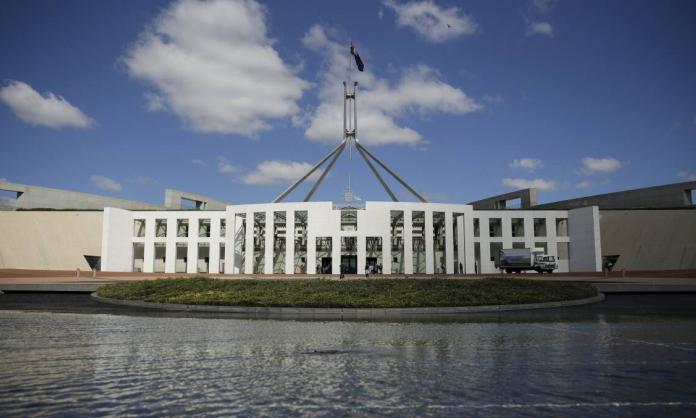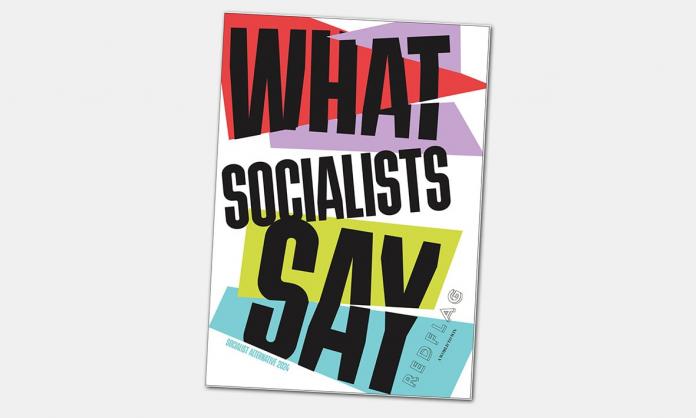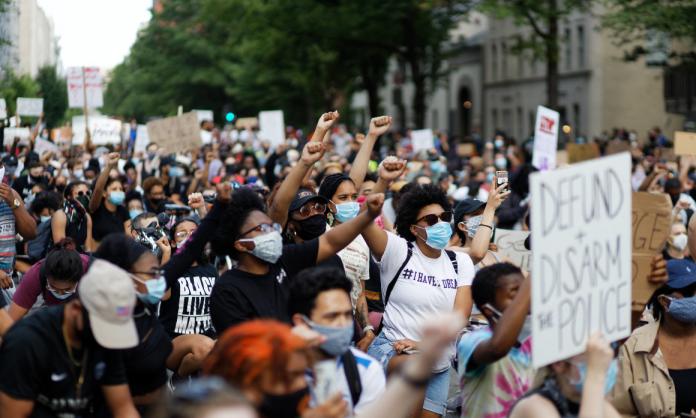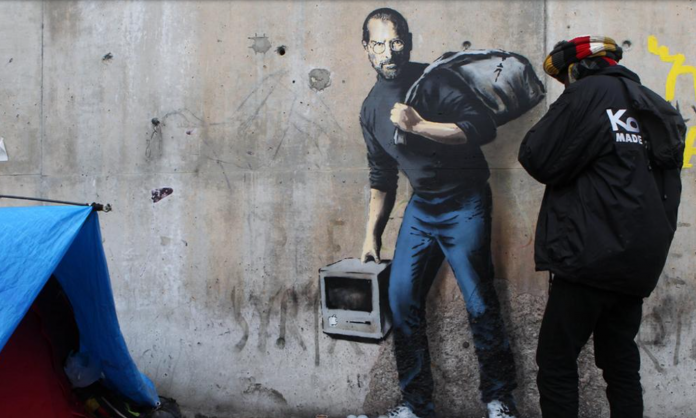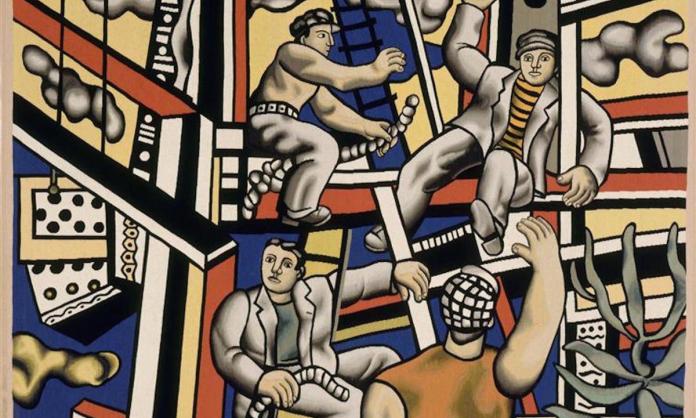For most people, the word “politics” brings to mind the workings of the state: who will win the next election, what laws politicians are debating, how well or badly the government is delivering public services. The mainstream media and political commentators are also fixated on it. They pay far more attention to the latest opinion polls or a squabble in parliament than they do to working conditions in a factory or the investment decisions made by merchant bankers, which are generally not considered political at all, but simply the natural workings of a market economy.
The state is central to political life because it is the arena in which all the fundamental conflicts of capitalist society burst into public awareness, even if they are not perceived as such. Chief among these conflicts are those between workers and capitalists, between competing capitalist firms and between different national blocs of capital.
But since these antagonisms cannot be permanently resolved without abolishing capitalism itself, the state can never attain the liberal ideal of serving as a neutral guardian of the interests of society as a whole. Instead, the state serves to perpetuate the existing capitalist order, charting a more or less viable path forward for a social system that would otherwise rapidly descend into anarchy under the weight of its own contradictions.
In 1852, Karl Marx described the French state as a “terrifying parasitic body which enmeshes the body of French society and chokes all its pores”. Since then, the state has only grown in complexity and size. In a modern, developed country like Australia, it forms a dense network of relations extending throughout the fabric of society.
Social contours of the state
The social weight of the Australian state is revealed by measuring its spending as a proportion of the entire economy. In the early 1900s, state expenditure made up less than 3 percent of the total economy. But by the mid-1970s, that figure had risen to one-third or more. The figure has remained roughly stable up until today. All of it must be paid for through taxation, which ultimately represents a deduction from the surplus value produced by workers, which would otherwise be available to boost the profits of business owners.
Governments are easily the biggest employers in Australia. Nearly 2 million people work in the public sector—around 14 percent of all employed people. Most are part of the working class, subject to the same kinds of managerial tyranny as workers in a factory, call centre or warehouse.
But those at the top of the state’s hierarchies belong to Australia’s ruling class. They frequent elite social circles and not infrequently move between positions in the public and corporate sectors. The pay’s not bad either. Glyn Davis takes home $940,000 per year as secretary of the Department of Prime Minister and Cabinet, although, to be fair, that’s a big pay cut from when he was vice-chancellor of Melbourne University. The NSW police commissioner gets $679,000 per year, while a High Court judge must make do with $567,000. Little wonder that they are thoroughly committed to maintaining the status quo of Australian capitalism.
The easiest way of mapping out the state is to describe the institutions from which it is formed. But this makes it apparent that to talk simply of “the” Australian state is an abstraction. Australia inherited from Britain a tradition of government in which the legislative, judicial and executive branches of the state have interlocking powers, with no branch clearly superior to the others. There is no singular, well-oiled state machine, in which power is centralised in the hands of an individual or a small group of people.
To complicate matters, Australia’s federal system replicates the three branches at both the national and state/territory levels, with limited powers further devolved to local councils. The federal government has tended to accrue power over time relative to the state governments, largely due to its superior ability to raise revenues through taxation. But the states retain important functions and can frustrate policy initiatives from Canberra. The Australian state is thus split both horizontally and vertically.
Elected parliaments form the legislative branch. Only parliaments can pass laws, including the crucial ability to generate revenue through taxes, and approve government spending. Hence governments are formed by the political party that can control the legislature. The Whitlam government was ended in 1975 when the federal parliament refused to pass its budget.
The judicial branch is responsible for interpreting and administering laws. This includes not only criminal cases like theft or arson, but also civil law such as contractual disputes, which govern capitalist economic activity. Courts also constrain or empower governments through their legal interpretations of constitutions. Although appointed by the government of the day, judges are extremely difficult to sack, so are largely immune from discipline by the other branches of the state.
Finally, the executive branch is tasked with carrying out most practical state functions, and is often referred to simply as “the government”. The executive is headed by the group of politicians who control a majority in parliament, hence references to “the Albanese government” or “the Dan Andrews government”.
But these politicians are clearly capable of very little on their own. The actual work of government is carried out by tens of thousands of personnel organised in an array of separate agencies. These includes the military, police and prisons, public service departments that perform administrative functions, and service delivery bodies such as schools and hospitals.
Many of these agencies operate with a high degree of autonomy from elected politicians. Universities, for example, are funded by the federal government but are largely free to determine who they enrol and what they teach. The Reserve Bank is mandated to control Australia’s money supply, including setting interest rates, independently from any outside control. Some services are supplied by corporations that are owned by the government but otherwise function much like any other business.
So the state consists of a range of agencies and jurisdictions, with varying and sometimes competing powers. In liberal political theory this “separation of powers” is celebrated as preventing abuses. But this does not stop the state carrying out systematic oppression when required—for example, the violence routinely meted out by police against Indigenous people or the mass impoverishment of unemployed workers.
What is restricted is the use of state powers in the interests of individuals or narrow cliques, rather than broader elite groups or the ruling class as a whole. It also means that individual politicians, bureaucrats, judges and so on are essentially interchangeable and replaceable. This provides stability to the state machinery.
Functions of the state
To be worthy of the name, a state must be able at a minimum to impose its own authority by force, establishing a basic level of legal order and defending its territory from incursions by other states. So at its core are what Lenin termed “special bodies of armed men placed above society and alienating themselves from it”. These are the police and armed forces, specialists in meting out physical violence and repression.
These forces are well resourced and organised in Australia. Federal and state police total around 60,000 personnel. To this can be added around 20,000 prison guards. The military incudes around 59,000 permanent personnel, with a further 31,000 reservists on call at need.
Defending “law and order” is not a politically neutral activity. It is a specifically capitalist order that is maintained at all costs, through rigorous enforcement of property law on the one hand, and on the other the suppression of political discontent that threatens to go beyond the acceptable bounds of polite dissent. These functions fall primarily to the police, including their riot squads specially trained to brutalise demonstrators and smash picket lines. If things get too out of hand, the military is also available to back them up.
But there is much more to the modern capitalist state than violent repression. This is reflected in financial allocations. In 2023-24, the federal government is allocating 6 percent of its budget to the military, compared with 37 percent to social security and 16 percent to health. The NSW government spends less than 5 percent of its budget on the police, compared with 20 percent on education.
Contrary to free market dogmas that the state is the antithesis of private enterprise, modern capitalism is dependent on the state in a multitude of ways. Indeed, it is hard to think of any economic or social activity in which the state does not play a part.
First, regulation of economic activity gives capitalism a framework in which it can function in a more or less predictable fashion. The legal regime that governs interactions between capitalist firms extends far beyond the biblical injunction “Thou shalt not steal” to a complex system of contractual law and intellectual property rights. Use and development of land are heavily regulated, as is the supply of labour through industrial relations and immigration laws. The Reserve Bank provides an adequate but stable supply of money. Financial regulations prevent the worst swindling perpetrated by the banks. Quarantine restrictions protect Australia’s agricultural industries.
Second, governments try to promote capital accumulation, with mixed success. They provide direct financial assistance to business partly as a handout to influential lobby groups, but also to spur development in industries that are considered of long-term strategic importance. For example, the federal government is spending $2 billion to kickstart what it hopes will be a new resources boom in the hydrogen industry. Scientific research that can eventually be commodified or improve production techniques is heavily subsidised, either directly to businesses, or through universities or other government bodies. Agencies such as the Treasury and the Productivity Commission monitor economic conditions and attempt to promote the health of the system as a whole.
Third, the state organises a range of infrastructure and basic services that are essential to a developed economy, but which are impossible to establish or run efficiently or profitably on the basis of private enterprise alone. This includes physical infrastructure for transport and communications, utilities like power, water and sewerage, and services like firefighting and waste disposal. The Victorian government spends around $280 million per year on roads alone. The Commonwealth government is spending $5.3 billion to construct the new West Sydney airport after private industry declined the opportunity. Even when infrastructure previously developed by the state has been privatised, it is generally heavily regulated or continues to be financially subsidised.
Finally, there are the welfare functions of the state, which secure a ready supply of skilled labour for capitalists to exploit. These activities account for by far the greater part of government expenditure in Australia. They also result in the state penetrating deeply into the ostensibly private sphere of our personal and family lives.
Schools, TAFEs and universities train the next generation of workers. They also allow parents of younger children, especially women, to participate at least part time in the workforce; hence the pressure to reopen schools as quickly as possible during the pandemic. Parents who don’t enforce children’s attendance at school are subject to legal penalties and official interference in their family affairs.
The public health system prevents too many workers dying prematurely after having been raised and trained at great expense. Unemployment entitlements provide a bare minimum subsistence to workers thrown out of a job, securing a reserve of labour readily available when it is once again needed by capitalists. Along with aged and disability pensions, unemployment entitlements also play a role in containing workers’ discontent. They give some protection against the vagaries of the labour market and suggest that, after a lifetime of toil, workers might at least get to enjoy a few years of retirement.
Unemployment entitlements are a good example of how the state can be simultaneously repressive (for instance forcing unemployed workers to apply for a certain number of jobs each month), constructive (generating the conditions for capitalism to flourish, in this case by regulating the labour supply) and ameliorative (providing a measure of relief from capitalism’s worst features).
Conflicts within the state
In fulfilling their many functions, state actors are subject to competing pressures. Ultimately, they must meet the basic needs of Australian capitalism, which are registered through the constant feedback mechanism of “market confidence”. But they also have to consider the demands of social groups beyond the narrow circles of the most powerful business owners. In Australia, this popular pressure is formalised through elections, with politicians forced every three or four years to cobble together, if not enthusiasm, at least some minimum passive acceptance from the public.
Leading elements of the state also compete to maintain their powers and privileges. State and federal governments squabble over conflicting jurisdictions. Government departments that deliver services defend their budgets from the Treasury and finance departments, which are charged with finding “efficiencies”. Mutual contempt between professional bureaucrats and politicians is one reason the latter increasingly rely on personal staffers, consultants and “independent experts” beholden to themselves, rather than on public servants.
As a result, state functions generally evolve as a series of ad hoc fixes and compromises, rather than according to a cunningly conceived master plan. For example, some of the worst instances of environmental destruction in Australia are mitigated, if inadequately, by laws that have been introduced over decades. Pressure to do so has come from environmental campaigners and working-class communities, but also at times from the middle classes—such as small farmers or tourism operators—whose businesses depend on the ecosystem. Reducing pollution can also serve the joint interests of the capitalist class, which doesn’t benefit from factories or waste dumps poisoning the collective workforce.
But because environmental destruction is also extremely profitable, regulation has evolved in an uncoordinated and contested way. For instance, in the early 1980s, the construction of the Franklin River dam to generate hydroelectric power was favoured by industry, some unions and the Tasmanian government. A committed protest movement opposed the dam, and the Hawke government saw political advantage at the national level in preventing its construction. A constitutional dispute between the Commonwealth and Tasmanian governments ensued, which was arbitrated by a third state institution, the High Court. It ruled that the national government had the superior jurisdiction on the issue, effectively blocking the dam. But the outcome was highly contingent, and could not have been predicted ahead of time by reading off how “the state” as a whole could best serve Australian capitalism in the abstract.
The ‘integral state’
Composed of multiple actors with often competing agendas, performing a complex of functions, how is it that the Australian state can accomplish anything at all? One answer is that it does not do so with any sort of efficiency. It is plagued by bureaucratic delays, ritualistic paper pushing, botched projects and sheer incompetence.
Construction of high-speed rail was first proposed in Australia in the early 1980s, as an alternative to road and air travel along the eastern seaboard. Forty years later, millions of dollars have been spent on feasibility studies, and this year a new High Speed Rail Authority was established. Not one kilometre of track has ever been laid.
Nonetheless, the state remains the most cohesive component of Australian society. In times of crisis, only the state can muster any sort of concerted response mobilising resources from across society. During the COVID-19 pandemic, it was not private business or an amorphous “civil society” that was able to impose quarantines, reorganise health services, procure and distribute vaccines and so on. These tasks were accomplished by the various agencies of the national and state governments, however clumsily.
For all their differences and petty rivalries, the leading personnel of state institutions are committed to a shared project of social stability and maximised capital accumulation within Australia. They have an economic interest in this project. State managers are well rewarded for their services, but only if they perform their allotted function within the mutually accepted framework of the “rule of law”.
The political coherence and structural power of the state also impact other social forces. Italian Marxist Antonio Gramsci described the modern state as “integral”, insofar as it is successful in cohering fairly wide sections of society around its own common political and economic project. The state comes to embody the ideology of the “national interest”—the idea that the development of capitalism can benefit the whole community, not just a narrow elite. Outside periods of economic or political crisis, most middle- and working-class people accept that the national interest is their interest too.
The state can play this integrating role because it is the framework around which social and economic life is built. It defines the boundaries of political action and national consciousness. Mainstream political parties act as a transmission belt between the state and wider social groups in this respect. They not only voice their constituencies’ interests, but also discipline them to channel their energies towards state institutions.
In Australia, political thought and action seem nearly inconceivable outside the framework of the nation state, including for the workers’ movement. Consider the document released by the Australian Council of Trade Unions in 2020, “Australia’s Economic Reconstruction after COVID-19”, which in effect served as a policy platform for the 2022 federal election. Across 24 pages, it contains the words “Australia”, “nation” and their derivatives a total of 163 times. The word “class” appears not once.
As much as any particular action or policy, it is through its ability to shape political consciousness that the state secures the stability of Australian capitalism. It is a frame of reference the working class must go beyond if we are ever to construct a fundamental alternative to capitalism.




